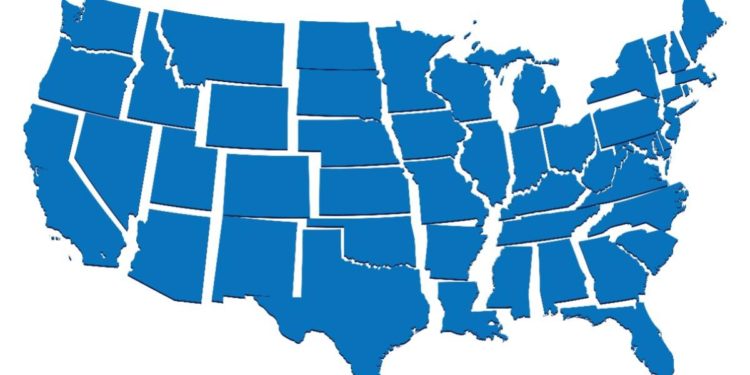There is more talk of secession and civil war in the United States today than at any time since the 1850s, and popular confidence in government appears to be at an all-time low. As a foreigner, I have no particular red or blue loyalties, but I have deployed with Americans on many occasions, and in some ways, their history is also mine. There is a chance that history will look at the culture wars of the 2010s as a prelude to the great disintegration of the 2020s, so it might be time to point out that confederation and preserving the union are not mutually exclusive.
The concept of sovereignty has a complicated history, and the unruly colonials of late eighteenth-century America added several twists. The US Constitution was a kind of archetype of modern federalism, providing an example that would be followed closely in Canada and Australia. The precise status of shared sovereignty in the early United States is famously controversial.
For the present purposes, it is enough to say that federalism implies a division of responsibilities so that state and federal governments have authority in their own right. Almost inevitably, the details of that division are often in dispute.
Confederations have delegated authority, existing somewhere between a federation and a treaty organization or alliance. They can be thought of as a special type of intergovernmental organization with an unusually broad mandate to originate and administer policy. The European Union is probably the closest thing to a real confederation in the modern world. The term is sometimes used more loosely for traditional reasons; the Swiss Confederation, for example, has actually been federal since the nineteenth century.
Devolution is in a sense the opposite of confederation, being the process of delegation from a single sovereign entity to subsidiary governments. In principle, these governments are departments of the sovereign state, but in practice, they often operate with a large degree of independence. Devolution can be associated with issues of popular legitimacy, raising questions about the real nature of sovereignty, or it can be more of an administrative convenience.
In the USA, “organic acts” are the traditional instrument of devolution, which organize a contiguous territory under federal jurisdiction. (The National Park Service Organic Act is an interesting case of organizing noncontiguous territory, applying for the most part to areas in states’ territories.) In principle, a federal territory could be established over a group of states. The territorial administration would exercise authority to the extent that the federal government itself has authority in that area.
The key to creating useful regional territories is cooperation, in this case based on complementary delegation of authority. To the federal government, a regional territory is devolution; to the states, it looks more like confederation. States can pass their own acts assigning responsibilities to the regional government. An important advantage of this complementary approach is that it could be used to preempt jurisdictional disputes. If both sides delegate an ambiguous power to the regional level of government, the question of where that authority actually comes from becomes largely academic.
A territorial government could have its own regional congress, governor general, and high court or equivalent bodies. The simplest funding model would probably assign a fixed proportion of state and federal revenue collected within the territory to the regional government. It may be that state taxes, corporate law, and various aspects of commercial regulation could be effectively standardized at the regional level, if national uniformity were out of the question.
The various layers of American law enforcement are bewildering to outsiders. Done badly, regional governments could add to this confusion, but done well, they could be a vehicle for consolidation. The National Guard and state defense forces already give American states a remarkably prominent role in defense, and it would be a natural step for this function to become regional. Regional defense force units could be assigned to regional or federal operational command as required.
The first step toward this new level of government would be for the federal government to pass a regional territories organic act incorporating a model constitution and standard processes for the establishment of territories. It would be sensible to require at least five original states to create a new territory, with each passing an enabling act in accordance with a prescribed formula.
States should be free to arrange themselves into regions through a process of gradual evolution, but the optimal outcome would be four or five territories, i.e., the North, the South, the East, and the West. Some states will probably choose to remain independent, and a few may come and go according to the politics of the day.
Why would a regional territories organic act be passed? In a sense, this is both a highly partisan and bipartisan issue, as both sides agree to disagree. The institutions of federal government have an unfortunate winner-takes-all quality. But the buffer of regional governments will reduce the sting of defeat when one side loses control of the presidency, Congress, or the Supreme Court. Neither side can expect to rule in perpetuity at the federal level, but both are likely to enjoy a distinct advantage in certain territories. Regional territories require a lower threshold of consent from the governed and provide a pressure valve in times of extreme disagreement.
It may be that the polls are wrong and Americans have great confidence in their government institutions, but from a distance, it seems that contingency planning would be prudent. Regional territories offer many of the benefits of secession in a counterintuitive way, through greater cooperation. Regionalism does not have to be about fragmentation. Done properly it can be about achieving a more perfect union.




